The Tuck Sit and Rock Back Sit might seem like similar movements from the handler’s perspective, but biomechanically, they are quite different. These exercises engage different muscle groups and target entirely different areas when incorporated into a conditioning program. Determining which Sit to Stand transition is better for your individual dog depends on several factors, including underlying weaknesses, structure, sport demands, and other considerations.
TL;DR: The answer is to use both.
Tuck Sit: Overview

The Tuck Sit-Kick Back Stand keeps the front feet still throughout and is designed to strengthen the musculature in the forehand. When used as a canine conditioning exercise, 100% of the weight shifts into the forehand, allowing the rear limbs to hop forward into a Sit, and back into a Stand position. The dog can only land lightly if the musculature supporting the thoracic sling engages properly and effectively balances the dog’s weight.
Rock Back Sit: Overview

In contrast, the Rock Back Sit – Push Forward Stand keeps the rear feet still, and is designed to strengthen the rear end. As a canine conditioning exercise, the dog shifts weight into the pelvic limbs, and uses the quadriceps, hamstrings, and gluteals to propel the body into a Stand. But, even MORE critical to strengthening is the eccentric phase. During the eccentric transition from Stand to Sit, these muscles—along with the gastrocnemius—resist gravity and slowly returns the dog to the Sit position.
💡 Did you know that muscle hypertrophy actually happens during the eccentric phase NOT the concentric phase?? This is why working through your canine conditioning exercises to the eccentric end range is so important to improving functional flexibility, strength, and POWER! To get the most out of your repetitions, think SLOW eccentric and FAST concentric.
The Tuck Sit – Kick Back Stand: Four Phases of Loading and Landing
Lift-Off Phase (Stand to Sit)
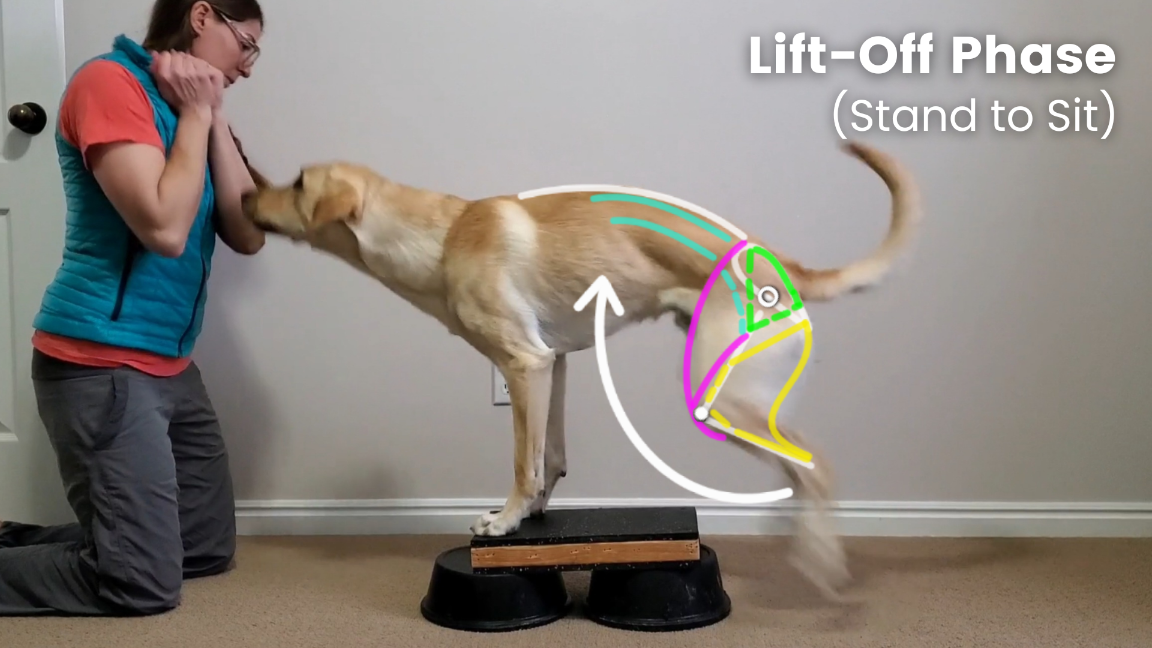
Targets the gluteals, quadriceps, hamstrings and hip flexors (iliopsoas). These muscle groups generate a powerful plyometric effort to propel the dog forward.
Landing Phase (Tuck Sit)
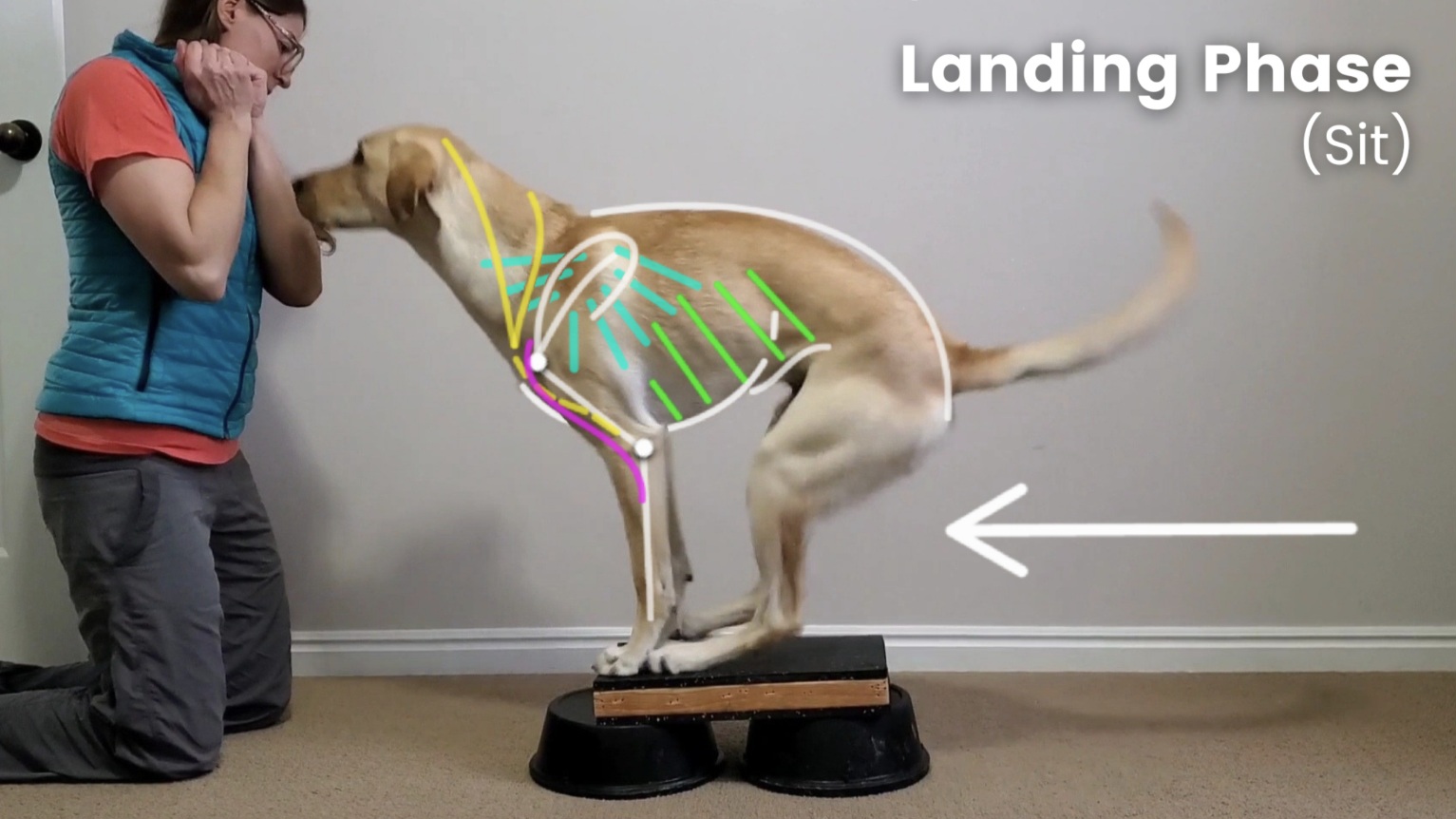
Engages the abdominal muscles and hip adductors to align the pelvic limbs with the sitting platform. The shoulder stabilizers (biceps, brachiocephalicus, and serratus ventralis) engage eccentrically / isometrically to absorb forward forces, and prevent the dog from losing balance to the front.
Lift-Off Phase (Sit to Stand)
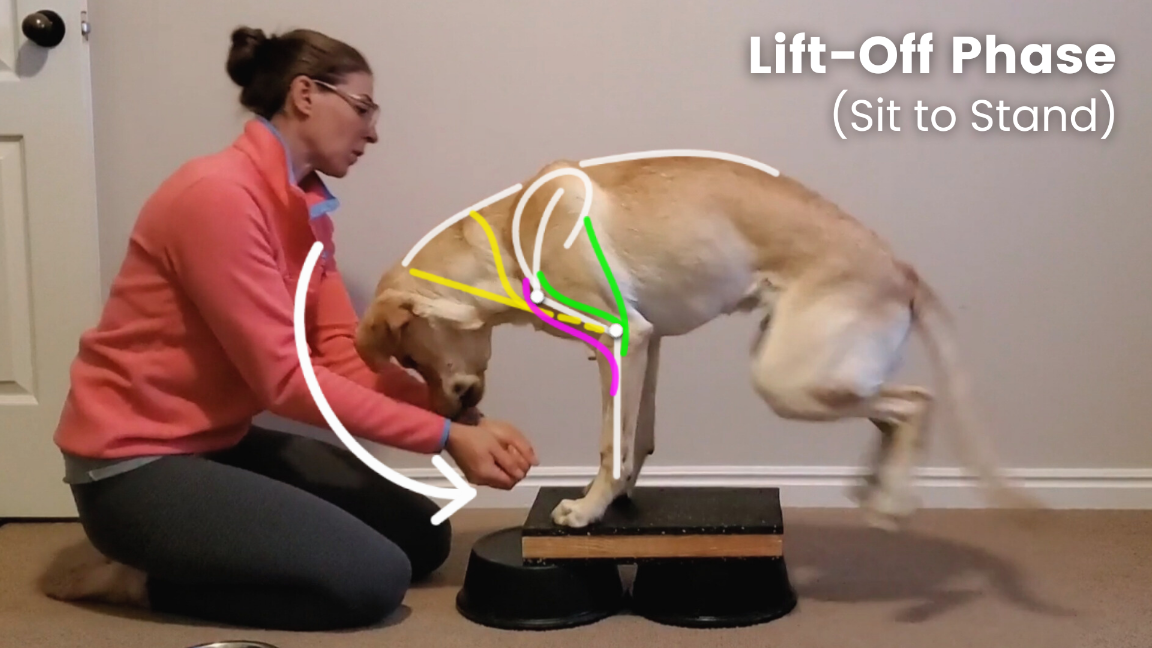
Engages the biceps, triceps, and brachiocephalicus to allow the shift weight forward, loading the forehand, and offloading the rear. To a lesser extent, core stabilizers (epaxials, hypaxials, and abdominals) are engaged as well. But not EVERYTHING is a core strengthening exercise!
Landing Phase (Kick Back Stand)
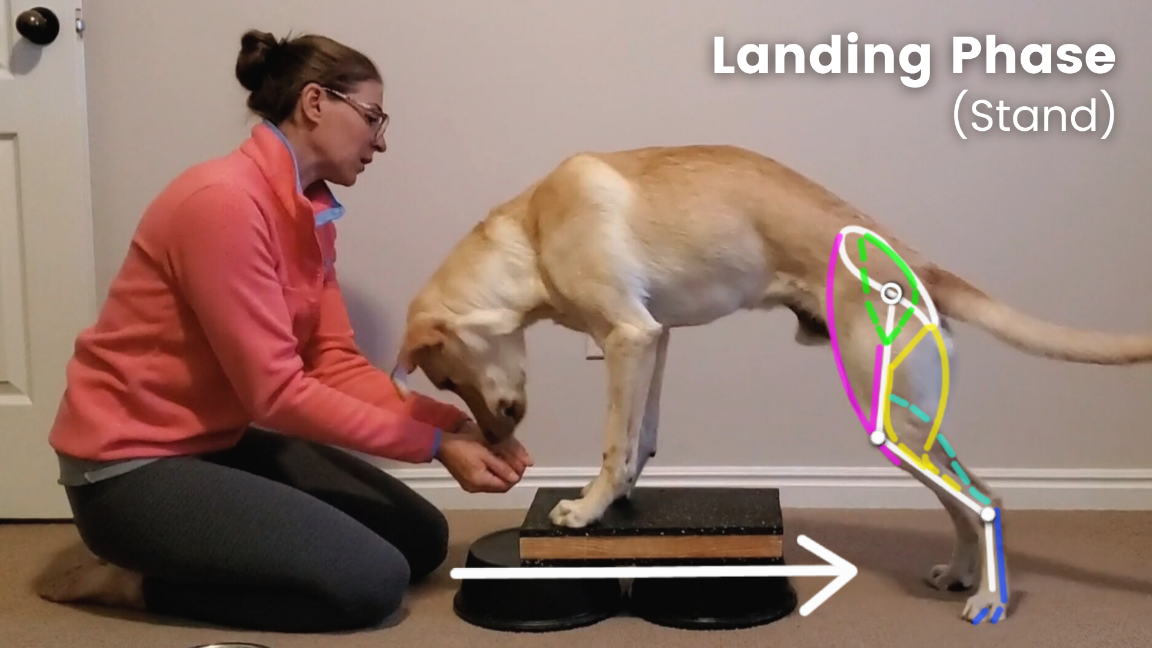
Targets the gluteals, quadriceps, hamstrings, gastrocnemius, and deep/superficial digital flexors isometrically. These muscles absorb gravity and ground reaction forces and control the landing.
To see a video of how this is ultimately used as a powerful plyometric exercise, check out the Hop Sit Sprints: Expert and Kick Up Stand: Expert video tutorials from the Sport Dog Program.
The Rock Back Sit – Push Forward Stand: Two Phases
Eccentric Phase (Rock Back Sit)
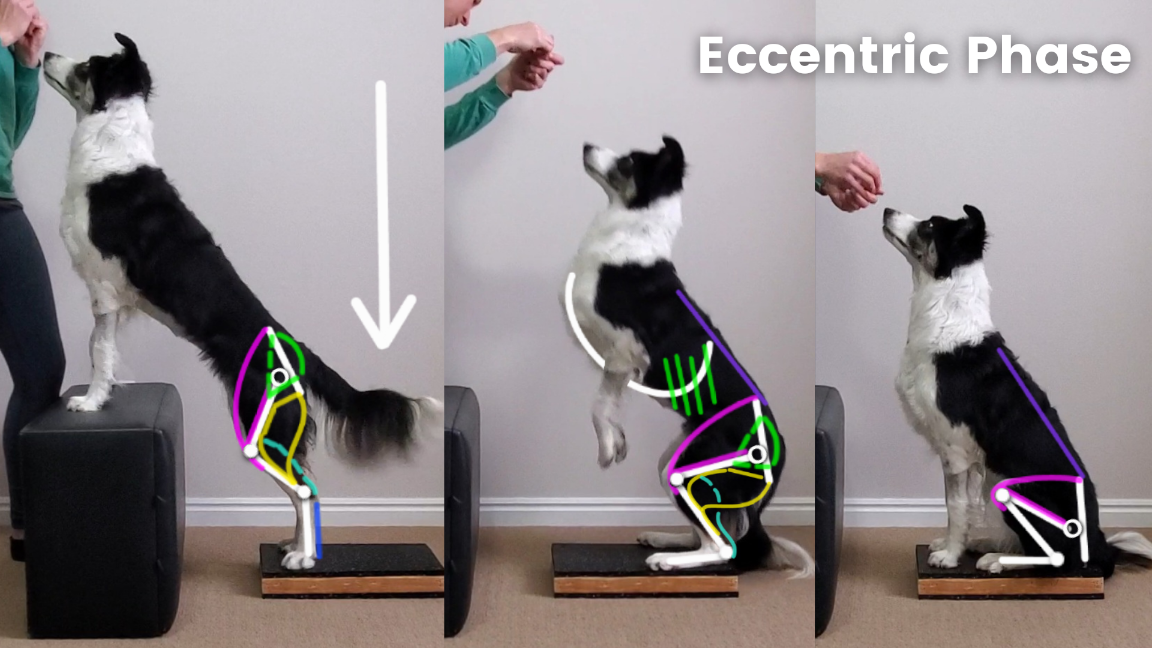
During the eccentric phase the dog transitions from Stand to Sit while slowly resisting gravity. This engages the gluteals, quadriceps, hamstrings origin, and gastrocnemius eccentrically. At the same time, the core stabilizers (epaxials, hypaxials, and abdominals) maintain neutral spine alignment to prevent the dog from losing balance to the rear, or landing “hard” on the forehand.
Concentric Phase (Push Forward Stand)
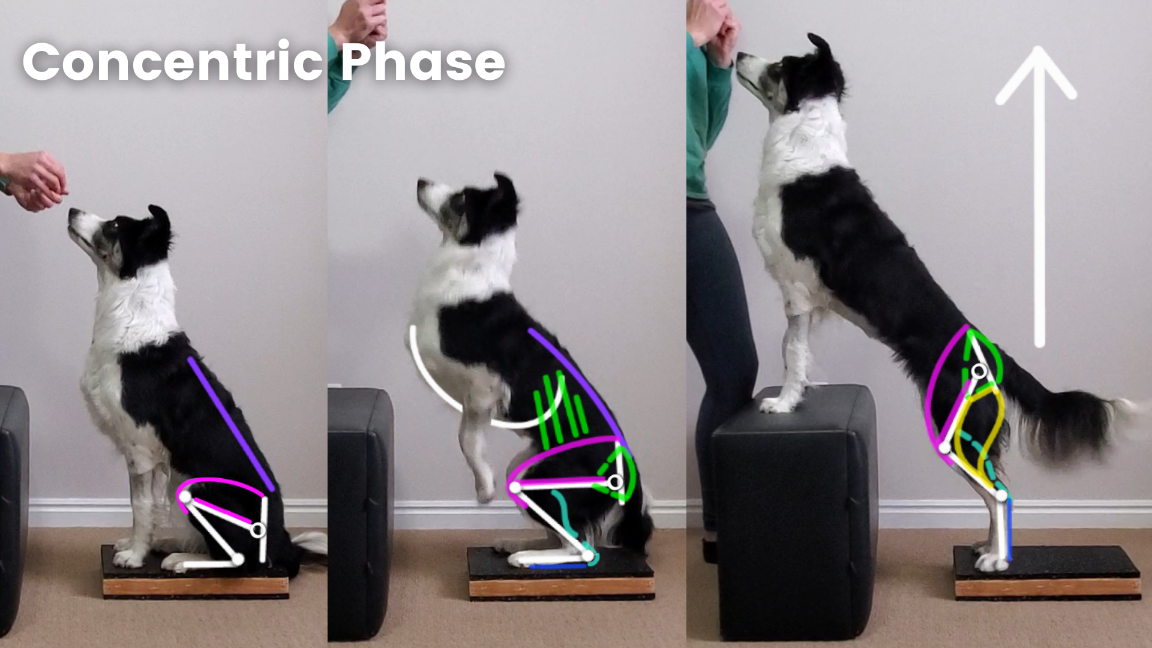
During the concentric phase, the dog transitions from Sit to Stand by shifting weight into the pelvic limbs, and driving the torso forward. This recruits the gluteals, distal quadriceps, hamstrings, and gastrocnemius concentrically.
When linked together at speed, these two phases replicate the plyometric effort needed for rapid acceleration and explosive jumping effort. To see this in action, check out the Double Ups: Expert video Tutorial included in the Sport Dog Program.
So Which One Is Better for My Dog?
The S.A.I.D. principle (Specific Adaptation to Imposed Demand) states that the body adapts specifically to the demands placed upon it. When selecting between these two movement patterns for a conditioning program, consider your dog’s regular activities, including both daily movement and sport-specific demands. Most dogs participating in sports or living an active lifestyle require both rear-end and front-end strengthening. What is propelled forward using the rear must stop using the front. Therefore, most dogs benefit from incorporating both the Tuck Sit and Rock Back Sit into their conditioning routines. However, if you had to choose just one, let the S.A.I.D. principle guide your decision.
What About a Sit to Stand Transition That Keeps All 4 Feet Still?
While this Sit to Stand variation is common, it is not something I include in my canine conditioning protocol. This variation limits hip extension making the movement pattern significantly less effective. Also… it’s bad dog training. Let me explain…
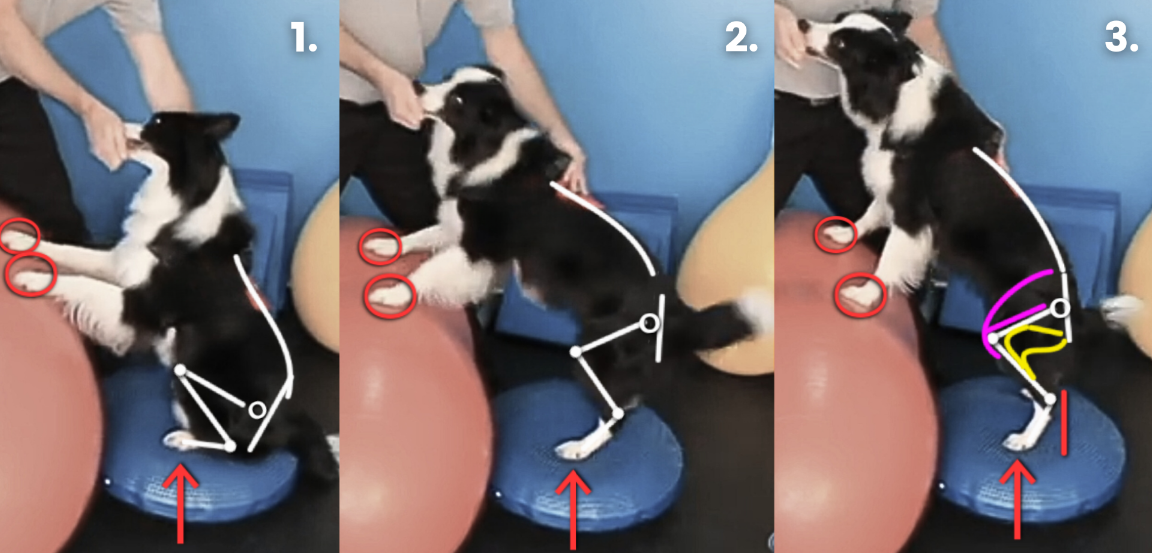
You can see in the photo above how the front and rear feet are remaining in position while the dog transitions from Sit to Stand. Because the dog is prohibited from stepping the rear feet backward, or moving the front feet forward, the spine is forced into a kyphotic (rounded) position. Also, the hock stops well in front of vertical, and the rear limbs cannot fully extend. Limiting the range of motion in this way makes the whole exercise significantly less effective. In fact, this approach actually promotes poor hip extension by shortening the hip flexors and preventing the gluteals and hamstrings from engaging. Not ideal.
Also… The training criteria is not clear for the dog. Because the dog’s body WANTS to move into neutral alignment, preventing the full range is confusing for the dog. And while we can’t always be perfect when executing our dog training criteria… The training plan SHOULD be as clear as possible. So clearly defining the difference between the Tuck Sit and Rock Back Sit (with regards to training criteria), and choosing one OR the other is best practice from a dog training perspective.
To see an example of how a Sit to Stand transition with front feet elevated SHOULD be executed, check out the Tuck Sit-Kick Back Stand + Front Feet Elevated: Advanced from the Sport Dog Program.
But Won’t This Confuse My Dog in the Ring or on the Field?
No! Teaching both movement patterns will not interfere with sport-specific performance. The contextual clues of the conditioning room, equipment, and handler position are entirely different from that of competition. So there shouldn’t be any confusion on the dog’s part. Practicing both these exercises will also promote muscle balance between the front and rear. This will improve overall strength and body awareness, resulting in a net positive for sport-specific movements. But if you’re still concerned, you can always add a verbal cue! Just make sure you select a different verbal cue for each behavior. I use “Sit” for Tuck Sit, and “Beep” (which means move away from me) for my Rock Back Sit cue.
So which Sit to Stand Transition IS better?
Tuck Sit and Rock Back Sit are both valuable exercises, each serving distinct biomechanical purposes. The Tuck Sit primarily strengthens the forehand and core stabilizers, while the Rock Back Sit targets rear-end power and control. Rather than debating which is better, the answer lies in strategic application. But most dogs benefit from both exercises to develop balanced strength and movement efficiency. By applying the S.A.I.D. principle, you can tailor these exercises to your dog’s specific needs, ensuring they gain strength where it matters most. And don’t worry—training both won’t interfere with sport-specific movements!
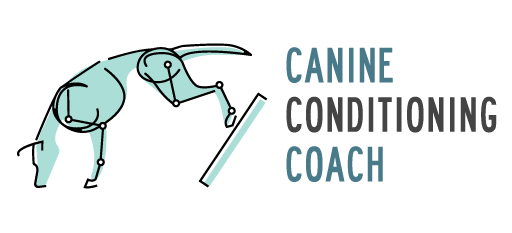
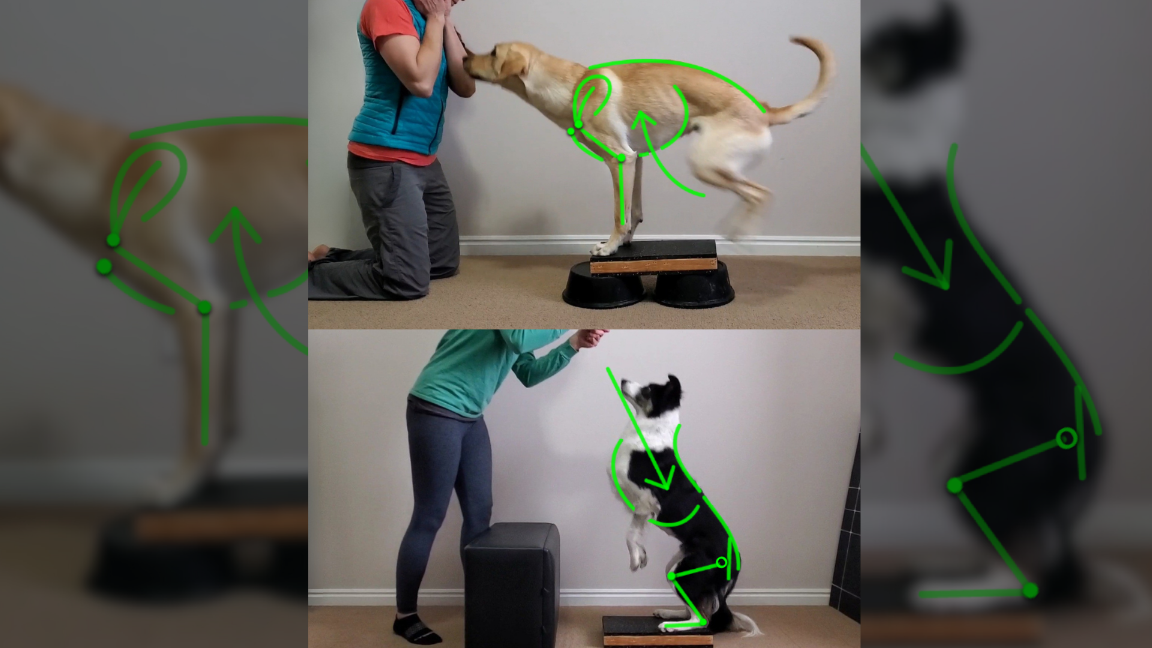
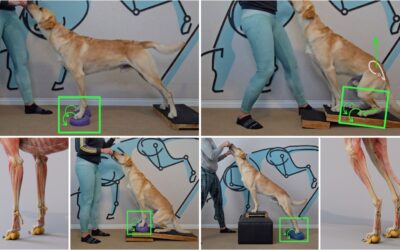
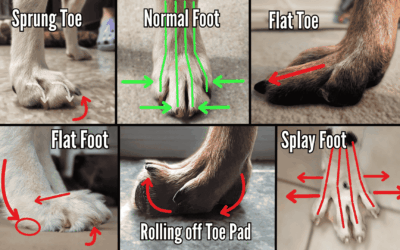
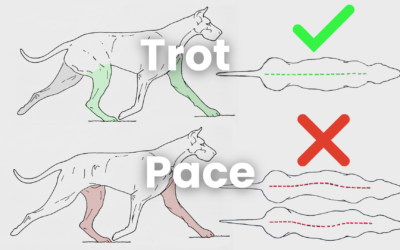
0 Comments